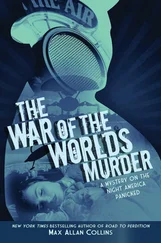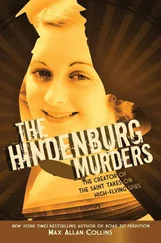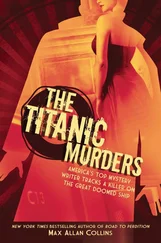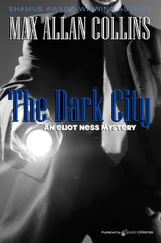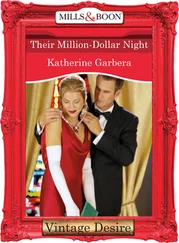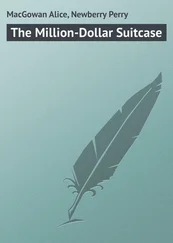Max Collins - The Million-Dollar Wound
Здесь есть возможность читать онлайн «Max Collins - The Million-Dollar Wound» весь текст электронной книги совершенно бесплатно (целиком полную версию без сокращений). В некоторых случаях можно слушать аудио, скачать через торрент в формате fb2 и присутствует краткое содержание. Жанр: Криминальный детектив, на английском языке. Описание произведения, (предисловие) а так же отзывы посетителей доступны на портале библиотеки ЛибКат.
- Название:The Million-Dollar Wound
- Автор:
- Жанр:
- Год:неизвестен
- ISBN:нет данных
- Рейтинг книги:3 / 5. Голосов: 1
-
Избранное:Добавить в избранное
- Отзывы:
-
Ваша оценка:
- 60
- 1
- 2
- 3
- 4
- 5
The Million-Dollar Wound: краткое содержание, описание и аннотация
Предлагаем к чтению аннотацию, описание, краткое содержание или предисловие (зависит от того, что написал сам автор книги «The Million-Dollar Wound»). Если вы не нашли необходимую информацию о книге — напишите в комментариях, мы постараемся отыскать её.
The Million-Dollar Wound — читать онлайн бесплатно полную книгу (весь текст) целиком
Ниже представлен текст книги, разбитый по страницам. Система сохранения места последней прочитанной страницы, позволяет с удобством читать онлайн бесплатно книгу «The Million-Dollar Wound», без необходимости каждый раз заново искать на чём Вы остановились. Поставьте закладку, и сможете в любой момент перейти на страницу, на которой закончили чтение.
Интервал:
Закладка:
While numerous books and newspaper accounts were consulted in the writing of the Guadalcanal section of The Million-Dollar Wound, several books proved particularly helpful. Semper Fi, Mac (1982), by Henry Berry, a Studs Terkel-style oral history of the Marines in the Pacific, was far and away the most valuable resource for that section, and is highly recommended to any readers interested in exploring this subject further. Very helpful as well (and recommended reading) were (are) two Marine memoirs: With the Old Breed (1981), E. B. Sledge; and Goodbye Darkness: A Memoir of the Pacific War (1980), William Manchester. And, of course, the autobiography of Barney Ross (written with Martin Abramson), No Man Stands Alone (1957), provided the basis for Barney and Nate’s story; it should be noted that the death of a Marine by “friendly fire” in this novel is fictional, although it grows out of an admission in the Ross autobiography that such an event nearly occurred. Otherwise, the account of Barney Ross’s experiences in that bloody, muddy shell hole is a true one.
The portrait of Westbrook Pegler is drawn primarily from two biographies- Pegler: Angry Man of the Press (1963), Oliver Platt; and Fair Enough: The Life of Westbrook Pegler (1975), Finis Farr. Also consulted were Pegler’s own writings, including the collections ’T Ain’t Right (1936) and George Spelvin, American, and Fireside Chats (1942), as well as his newspaper columns pertaining to Bioff and Browne. The anti-Semitic behavior of Pegler depicted here is reflected in these biographies to an extent, as well as in Louis Nizer’s My Life in Court (1961); but is based also upon an interview with an acquaintance of Pegler’s who was on the receiving end of the columnist’s prejudice.
As was the case in True Crime (1984), the portrait of Sally Rand herein is a fictionalized one, though based upon numerous newspaper and magazine articles, and especially drawing upon Stud Terkel’s oral history Hard Times (1970); but I feel I must label it as fictionalized, as I know of no historic parallel in Sally Rand’s life to her relationship with Nate Heller. Her portrait in these pages is also drawn from a 1939 Collier’s article by Quentin Reynolds. The portrait of Robert Montgomery is largely drawn from another Collier’s article by Reynolds of approximately the same vintage (it is typically Heller-ironic that two articles by Quentin Reynolds, whose libel suit against Westbrook Pegler spelled the beginning of the end for the feisty columnist, served as major reference sources for this novel). The Montgomery portrait was further drawn from Current Biography (1948) and Contemporary Authors, his own book Open Letter From a Television Viewer (1968), and various other magazine articles and books.
Other books that deserve singling out include The Legacy of Al Capone (1975) by George Murray-the only comprehensive study of the post-Capone mob era, and a very valuable reference to the writing of the Nitti Trilogy; The Tax Dodgers (1948), a memoir by Treasury Agent Elmer L. Irey (with William J. Slocum); and The Extortionists (1972), a memoir of Herbert Aller, business representative of the IATSE for thirty-six years.
The portrait of Antoinette Cavaretta, the second Mrs. Nitti, must be viewed as a fictionalized one. Although the basic facts of her business involvement with Nitti, working as E. J. O’Hare’s secretary, marrying Nitti, etc., are accurate, few interviews with her exist (and these brief interviews were at the stressful time of her husband’s death); my imagined portrait of her is largely drawn from the newspaper accounts of the day, and from material in Murray’s The Legacy of Al Capone and Ed Reid’s The Grim Reapers (1969). Also consulted (in regard to Antoinette Cavaretta and other mob-related figures in this book) were the transcripts of the Kefauver Senate Crime Investigating Committee hearings. Nate Heller’s speculations about Cavaretta’s personal relationship with Nitti prior to their marriage-including her possible role in O’Hare’s murder-should be viewed as just that: speculation; and speculation by a fictional character in a historical novel, at that. It should be noted, however, that the Kefauver investigators explored the same area in the questioning of various Chicago crime figures.
Several hardworking people helped me research this book, primarily George Hagenauer, whose many contributions include helping develop the theory regarding Frank Nitti’s “setting up” Al Capone, and exploring the suspicious circumstances surrounding Nitti’s death. In the previous two volumes “from the memoirs of Nathan Heller,” True Detective (1983) and True Crime (1984), which with this novel comprise the Nitti Trilogy, theories regarding the assassination of Mayor Anton Cermak, and the substitution of a “patsy” in the FBI-sanctioned shooting of John Dillinger, were respectively explored; these theories, however, had been discussed and developed, in part at least, by previous crime historians. To our knowledge, no one has ever before questioned and explored the circumstances of Nitti’s suicide, or seriously suggested that Nitti engineered Al Capone’s fall; these theories are new to this volume. Despite their presentation within this fictional arena, we offer, and stand behind, these as serious theories and invite further research by crime historians, which we feel will only serve to demonstrate the legitimacy of our claims. (We have, for example, visited the Nitti death site, the terrain of which tends to confirm our notion that a gunman or gunmen may have been firing at Nitti just prior to his suicide.)
Mike Gold, another Chicagoan who is a Chicago history buff with an eye for detail, provided his usual help and support. My friend John W. McRae, a Marine through and through, was kind enough to read the Guadalcanal section and make some suggestions, all of which I took. My friend and frequent collaborator, cartoonist Terry Beatty, also lent his support and editor’s eye to this project. And I would like especially to thank Dominick Abel, my agent, who has done more for me than these few words can indicate. Ruptured Duck awards for combat duty are due Tom Dunne, my editor, who has believed in Heller from the beginning; and his associate Susannah Driver, whose hard work on these books was well above and beyond the call of duty. Thanks also to editorial assistants Susan Patterson and Pam Hoenig. And a big thanks to Ed Gorman and Connie Sisson of Media Consultations. Thanks also to Jane Crawford, of AAA Travel Agency, Muscatine, Iowa; and Chris Dobson, American Airlines historian. Thanks to Chicago’s Bob Cromie for sharing his Pacific experiences in an interview (and whose original Tribune articles were invaluable). And a tip of the fedora to three suspense masters: Andrew M. Greeley, Howard Browne and Mickey Spillane, for help, suggestions, and support.
A special thanks to my aunt and uncle, Beth and Paul Povlsen, who shared with me their wartime experiences as nurse and corpsman, respectively, at St. Elizabeth’s. Some of the medical treatment described herein (including the use of hypnosis in treatment of amnesia) derives from John Huston’s classic documentary Let There Be Light (1948).
Photos selected by the author for use in this edition are courtesy AP/World Wide Photos and the Chicago Tribune; the rest have been selected from the personal collections of George Hagenauer and the author, the bulk of them having been culled from long out-of-print “true detective” magazines of the late thirties and early forties-a few others are U.S. Marine Corps photos. Efforts to track the sources of certain photos have been unsuccessful; upon notification these sources will be listed in subsequent editions.
Читать дальшеИнтервал:
Закладка:
Похожие книги на «The Million-Dollar Wound»
Представляем Вашему вниманию похожие книги на «The Million-Dollar Wound» списком для выбора. Мы отобрали схожую по названию и смыслу литературу в надежде предоставить читателям больше вариантов отыскать новые, интересные, ещё непрочитанные произведения.
Обсуждение, отзывы о книге «The Million-Dollar Wound» и просто собственные мнения читателей. Оставьте ваши комментарии, напишите, что Вы думаете о произведении, его смысле или главных героях. Укажите что конкретно понравилось, а что нет, и почему Вы так считаете.

